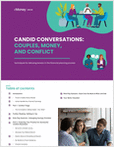Negative real interest rates, the risks of holding cash, the implausibility of the Federal Reserve’s plans to raise rates and the coming of market instability — all these factors strengthen the case for investing in gold in the analysis of currency funds manager Axel Merk.
The investment strategist’s latest shareholder newsletter is consistent with past warnings about investing in an era of financial repression.
A key antagonist in that narrative is zero interest rate policy (ZIRP), but Merk emphasizes that that unloved (by savers) policy has been replaced with an even more repressive environment of negative real rates.
Subtracting headline inflation from the nominal interest rate, Merk shows that negative real rates have prevailed since the financial crisis, but highlights the fact that real rates in the U.S. are actually lower than in the eurozone.
Because deflation has recently taken root there, subtracting a negative consumer price index value actually generates a low positive value for European interest rates.
The key investor implication of this trend is that holding cash can no longer be considered safe, particularly for dollar investors.
Merk argues that gold — often decried for its zero percent yield — “may be a formidable competitor when real interest rates are negative.”
While many investors value the convenience of cash because their daily expenditures are priced in their local currency, Merk, who launched the Merk Gold Trust ETF in May, next assesses expectations for future earnings.
“It’s not that gold will change, but the currency in which it is valued,” he says, pointing out that gold has averaged an 8.3% annual return with 0.02% correlation to equities over the past 44 years.
Not only has gold held fast against a depreciating currency, but it has retained purchasing power. “a gallon of milk or a suit cost about as much in gold 100 years ago as they do today,” he adds.
Cash’s ability to do that is jeopardized not only by inflation but by a CPI that Merk suspects of underreporting inflation.








 February 11, 2015 at 09:47 AM
February 11, 2015 at 09:47 AM










